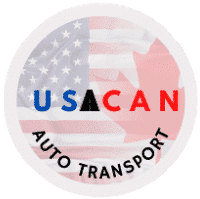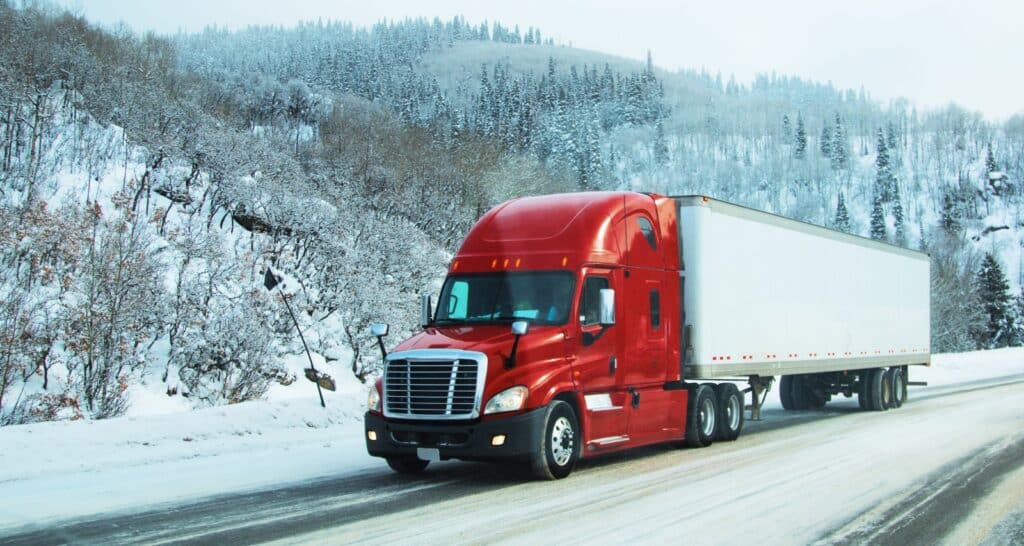Are you ready for the challenges on winter cross-border shipping between the USA and Canada? As temperatures drop and snow and ice become more prevalent, transporting vehicles can become increasingly complex.
At US Canada Auto Transport, we know that proper winter preparation is crucial for ensuring your vehicle arrives safely and in top condition. What have we prepared for you? We’ll offer essential tips and insights to help you prepare your vehicle for winter shipping across borders.
Why Preparing Your Vehicle for Winter is Crucial
Winter weather can significantly impact the transport of vehicles, especially when crossing borders between the USA and Canada. Cold temperatures, snow, and ice introduce several challenges that require careful planning and preparation:
- Cold Temperatures: Extreme cold can affect various vehicle systems, including the battery, fluids, and tires. Engine fluids such as antifreeze, oil, and transmission fluid need to be suitable for low temperatures to prevent freezing and ensure proper operation. Cold weather can also reduce battery efficiency, making it harder for the vehicle to start.
- Snow and Ice: Snow and ice can create hazardous driving conditions for transport trucks, increasing the risk of accidents or delays. Ice accumulation on roads can lead to slippery surfaces, while heavy snowfalls can obstruct routes and slow down transport.
- Salt and Road Chemicals: To combat icy conditions, roads are often treated with salt and other de-icing chemicals. While effective for improving road safety, these substances can cause rust and corrosion on your vehicle if not properly addressed.
Proper preparation helps mitigate these risks and ensures a smoother shipping process, protecting your vehicle from potential damage.

Steps to Prepare Your Vehicle for Winter Shipping
1. Perform a Thorough Inspection
Before your vehicle embarks on its winter journey, conducting a thorough inspection is essential:
- Check Fluids: Ensure that your vehicle’s fluids are at the appropriate levels and are suitable for winter conditions. This includes checking the antifreeze to make sure it can handle extreme temperatures. Engine oil should also be checked and possibly changed to a winter-grade formula that flows better in cold temperatures. Additionally, make sure the windshield washer fluid is full and formulated to prevent freezing.
- Inspect the Battery: Cold weather can reduce battery performance, leading to starting issues. Have your battery tested by a professional to ensure it is in good condition. If it’s older or showing signs of weakness, consider replacing it before shipping.
- Examine Tires: Proper tire maintenance is crucial for winter driving. Check the tire pressure, as cold temperatures can cause it to drop. Verify that the tread depth is sufficient for winter conditions, and consider installing winter tires, which offer better traction and handling on snow and ice.
2. Clean Your Vehicle
A clean vehicle is not only more presentable but also helps in identifying any pre-existing damage:
- Wash and Wax: Thoroughly wash your vehicle to remove dirt, grime, and road salts that could contribute to rust during transport. Applying a coat of wax provides an extra layer of protection against road chemicals and harsh weather conditions, helping preserve the vehicle’s finish.
- Interior Cleaning: Clear out any personal items from the interior and clean it to prevent moisture buildup, which can cause mold and unpleasant odors. Ensuring the interior is dry and clean also helps to maintain the overall condition of your vehicle.
3. Prepare for Extreme Weather Conditions
Winter conditions can be severe, so taking additional precautions is important:
- Seal Gaps: Make sure that all windows and doors are properly sealed to prevent cold air and moisture from entering the vehicle. This helps protect the interior from frost and condensation that could damage electronics or upholstery.
- Protect the Undercarriage: Road salts and de-icing chemicals can lead to rust and corrosion on the vehicle’s undercarriage. Consider applying a protective coating or rust inhibitor to shield this vulnerable area from damage.
4. Check Your Vehicle’s Emergency Kit
Having an emergency kit in your vehicle is essential for winter travel:
- Include Essentials: Pack items such as a blanket, flashlight, first aid kit, and basic tools. These items will be useful in case of an emergency or if you need to address minor issues during transport.
- Add Winter-Specific Items: Equip your emergency kit with winter-specific items, such as snow boots, a snow shovel, and ice scrapers. These tools can help you handle unexpected snow or ice accumulation.
Selecting the Best Transport Method for Winter Shipping
Enclosed vs. Open Transport
When shipping your vehicle in winter, consider the benefits of each transport method:
- Enclosed Transport: Enclosed transport provides the highest level of protection against winter weather. It shields your vehicle from snow, ice, and road salt, reducing the risk of damage. This method is especially recommended for high-value, classic, or luxury vehicles that require additional care.
- Open Transport: While more economical, open transport exposes your vehicle to the elements. This method is less protective against winter conditions but can still be a viable option for vehicles that are already winterized or for those who are looking to save on transport costs.
Choosing a Reliable Transport Company

Choosing a reputable transport company is crucial for a successful shipping experience:
- Experience: Look for companies with experience in handling winter shipments and cross-border transport. An experienced company will be better equipped to handle the challenges posed by winter weather.
- Insurance Coverage: Ensure that the transport company offers comprehensive insurance coverage. This protects your vehicle in case of any damage or loss during transit.
- Customer Reviews: Check reviews and ratings to gauge the reliability and service quality of the transport company. Positive feedback from previous customers can provide assurance of a company’s credibility.
How US Canada Auto Transport Ensures Shipping Success
At US Canada Auto Transport, we are committed to providing top-notch service for your winter cross-border shipping needs. Our team is experienced in handling the unique challenges of winter transport, ensuring that your vehicle arrives safely and on time. We offer a range of transport options, including enclosed shipping, to provide the best protection for your vehicle during the winter months.
Tips for a Smooth Shipping Experience
Communicate with Your Transport Company
Clear communication is essential for a successful shipping experience:
- Discuss Winter Precautions: Inform the transport company of any specific winter-related concerns or requirements. This ensures that they are aware of the conditions your vehicle will be exposed to and can make necessary arrangements.
- Confirm Logistics: Verify pick-up and delivery arrangements, and ensure that both parties are aware of any potential weather-related delays. Clear logistics planning helps minimize disruptions and ensures a smoother transport process.
Be Prepared for Delays
Winter weather can sometimes lead to unforeseen delays:
- Allow Extra Time: Build extra time into your schedule to account for possible delays caused by weather conditions. This flexibility helps avoid any inconvenience if there are unexpected delays.
- Stay Informed: Keep in touch with your transport company for updates on your vehicle’s status. Staying informed helps you track your vehicle’s progress and address any issues promptly.
Preparing your vehicle for winter cross-border shipping involves a thorough inspection, cleaning, and winterization. Ensure that your vehicle is equipped for extreme weather conditions and choose a reliable transport company like US Canada Auto Transport to ensure safe and efficient shipping. With proper preparation, you can navigate the winter months with confidence and peace of mind.
Conclusion
Proper preparation is essential for winter cross-border auto transport between the USA and Canada. By following these guidelines, you can ensure that your vehicle is ready for the challenges of winter shipping. At US Canada Auto Transport, we are dedicated to providing exceptional service and ensuring that your vehicle is transported safely and efficiently, no matter the season.
Ready for your winter cross-border shipping? Contact US Canada Auto Transport today to get a free quote and learn more about our winter transport services. Let us handle the details while you focus on your destination.

